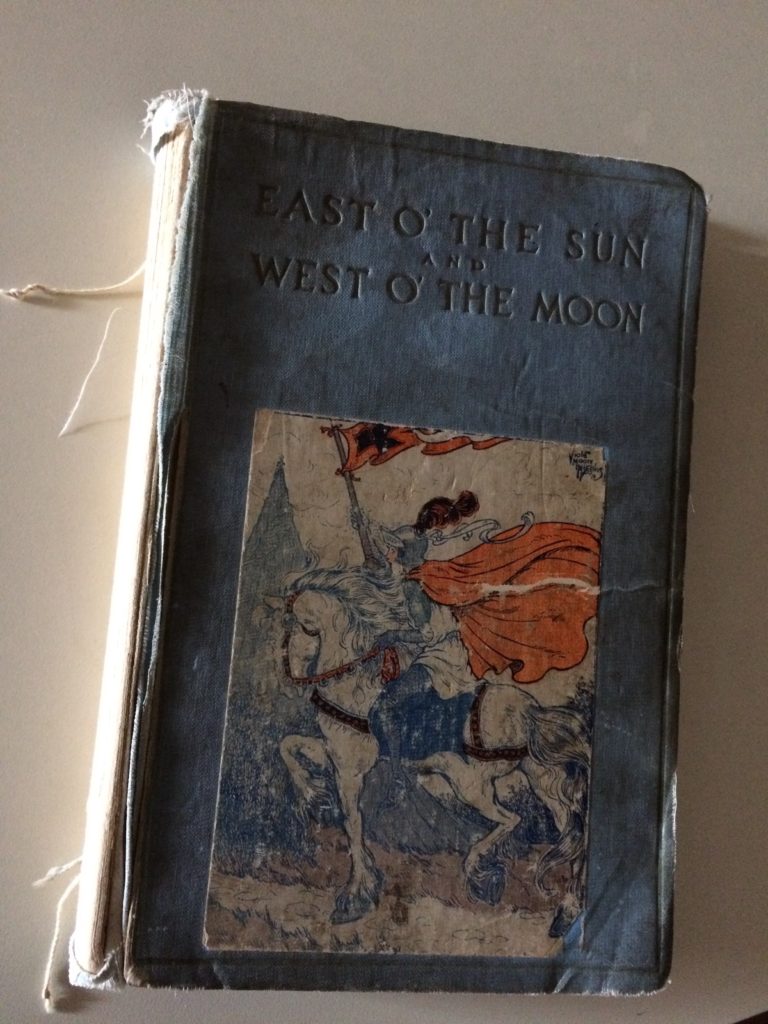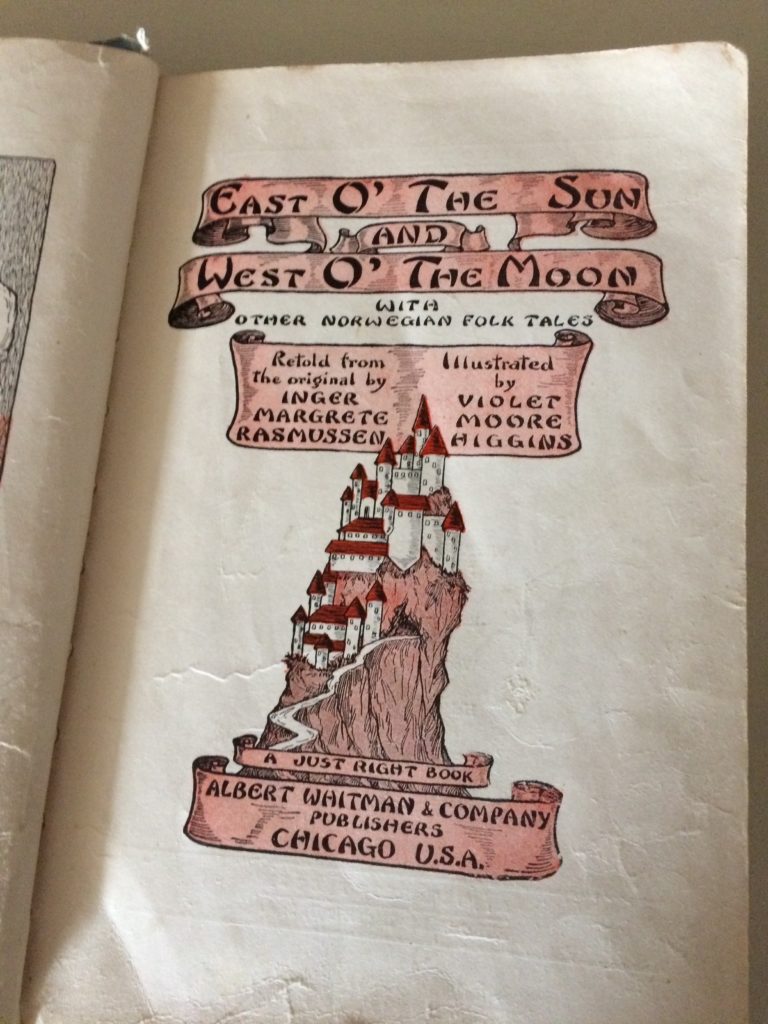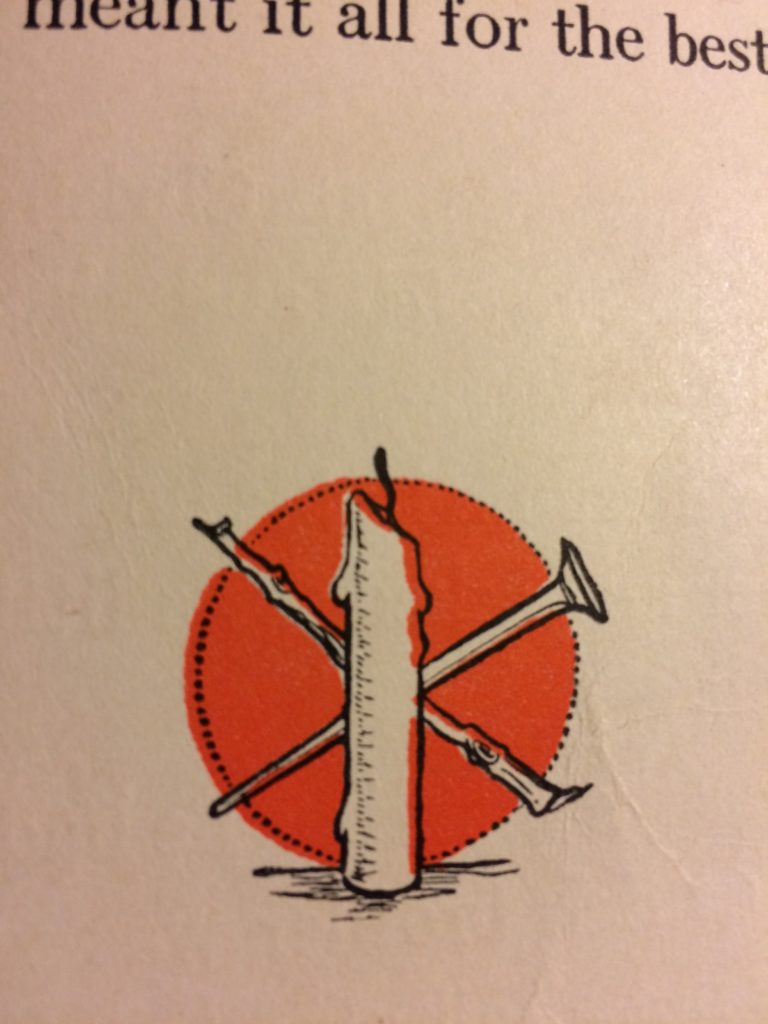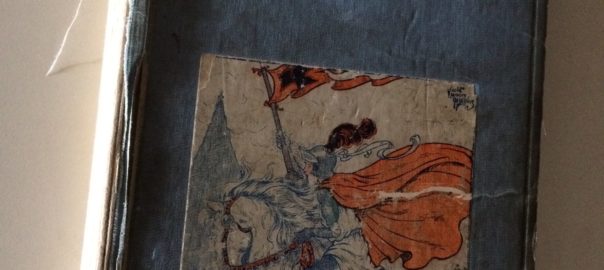The Norwegian Tales: My Inspiration for Including Illustrations
Last time I shared the fact that I had asked my daughter to create the illustrations that grace the chapter heads and the cover of The Handel Letters. Here I would like to say a little more about what prompted me to have illustrations in the book. The reason flashes back to my childhood. I was lucky enough to live right next door to my grandmother, Gertrude Dolby. I spent countless hours just messing around with whatever she found for me to do—sitting on her porch swing as she shelled peas or pitted cherries, reading old letters from my Aunt Mary, or listening as she read the poems of James Whitcomb Riley or from other books. Among her books was one I came to love above all others. It had belonged to my older cousins, Ruth and Rosemary Hull, but for some reason, it stayed in Indiana with my grandmother when my cousins moved to California. The book was a collection of fairy tales, East o’ the Sun and West o’ the Moon. Even then, it showed extreme signs of heedless handling by children, but I still have it, I’m happy to say. Here is a photo:

The book was the Third Edition of the title, published by Albert Whitman & Company of Chicago, and copyrighted in 1924. Though clearly based on the collection of Norwegian tales, Norske Folkeeventyr, published in 1843-1844 by Peter Christen Asbjørnsen and Jørgen Moe, the book does not reference this source. Instead, the stories are noted to be “retold from the original” by Inger Margrete Rasmussen, though it isn’t clear whether the “original” refers to the Norwegian or English text. Such disregard for sources was fairly common in children’s books. The earliest English translation of the tales, by George Webbe Dasent in 1859, did acknowledge the Norwegian source, but Dasent’s translation was intended as a scholarly work, inspired by translations of the Grimms’ folktale collection. My beloved but battered version was meant for children.

As you can see, the illustrator was a woman named Violet Moore Higgins. She was an American artist working in the early 1900s, primarily in children’s book illustration, but she also produced a comic book character, Drowsy Dick. You can find out a little more about Moore at the following website:
www.lambiek.net/artists/m/moore-higgins_violet.html
I have always liked the pictures in the Rasmussen/Higgins book. And I can’t help noticing that both the translator and the illustrator of that book were women. Though we don’t know whether the 19th-century oral storytellers were men or women, we do know that the better-known Dover edition of the Norwegian tales was clearly the work of men: two Norwegian collectors, one British translator, and several well-known Norwegian artists. Primary among those 19th-century Norwegian artists were Theodor Kittelsen, Erik Werenskiold, and Per Krohg. These artists are still revered as national treasures in Norway. I was impressed to find, during my year in Norway, that some of the illustrations from the tales were found on such common products as shampoo packets in hotel rooms. Norwegians love their stories (and their artists).
Though Violet Moore Higgins’s illustrations hold a special place in my heart, I do very much appreciate the selection of seventy-seven illustrations reproduced in the 1970 Dover edition of the Norwegian tales. Consider two Illustrations by Theodor Kittelsen drawn to illustrate the story titled “The Twelve Wild Ducks,” a version of ATU type 451. (See www.atlasobscura.com/articles/aarne-thompson-uther-tale-type-index-fables-fairy-tales for a discussion of Types of International Folktales.) Usually the type involves seven brothers transformed into ravens, but here it is twelve brothers transformed into ducks. Many of Kittelsen’s works are available at this address: https://commons.wikimedia.org/wiki/Category:Theodor_Kittelsen.


Both drawings convey some cultural data along with representing aspects of the plot. You see some material culture of the time—the girl’s dress, the log house with sod roof), some sense of place (the wet meadow with thistles, the hilly landscape). Generally the illustrations from the original Norwegian collection were of this sort—realistic and skillfully executed representations of plot elements. Imagine how wonderful it was to have such visual accompaniments to the stories before the days of photography, video, and film. Including illustrations in children’s books is still a wonderful endeavor—thus the coveted Caldecott Award. But for my own book—a book for adults rather than children—I wanted something more like a reference or allusion to something in each chapter.
When I talked with my daughter about this idea, she suggested that what I really wanted was something more like an icon that recalls some motif in the text. As a folklorist, my association with the word icon was the pictures or three-dimensional figures of saints often used in religious ritual. Two colleagues recently published a study of people who create such pictures and sculptures in Brazil. See:
But Alexis said that she meant something more like the emoji or icons so often used online these days. The images are more sketchy and symbolic rather than realistic and culture-specific. I realized that there were in fact a few drawings of that sort in the Rasmussen-Higgins collection of my childhood. As Alexis said, these were simply easy reminders of some part of the story, not really the weightier kind of imagery conveyed through an illustration. One example from Violet Moore Higgins was this one recalling for the reader a motif in the story of “The Lad Who Fooled the Troll and Won the Princess,” or ATU 328. The lad used a nail, at twig, and a candle to fool the troll into thinking he was cutting the lad’s finger.

So, we decided to have such evocative icons as pictures heading up each chapter. More about a few specific drawings later. Thanks for stopping by.
